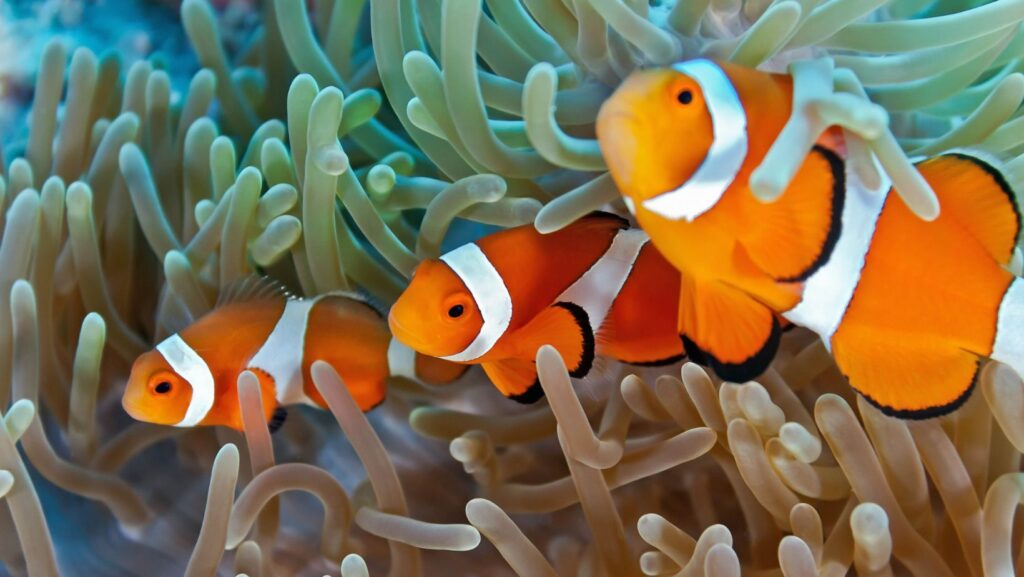The Enchanting World of Clownfish
Beneath the waves of the world’s oceans, a vibrant and charismatic character reigns supreme – the clownfish. Famous for its striking appearance, endearing behavior, and fascinating symbiotic relationship with sea anemones, the clownfish is a favorite among marine enthusiasts. Join us on a journey into the underwater realm to discover the captivating world of these delightful and resilient creatures.

Appearance and Diversity: Clownfish, belonging to the Amphiprioninae subfamily, are instantly recognizable by their bold and contrasting colors. Typically, they display bright orange hues adorned with distinctive white stripes outlined in black. However, not all clownfish are created equal; their coloration can vary based on species and geographic location. With over 30 recognized species, these charming fish exhibit a wide spectrum of colors, from the electric blue of the “Blue Clownfish” to the striking yellow and black of the “Clark’s Clownfish.”
Behavior and Social Structure: Clownfish are renowned for their social structure and intriguing behavior. In the wild, they form small family groups led by a dominant female. In the absence of the dominant female, the largest male in the group undergoes a sex change and takes on the role of the new female. This unique adaptation ensures the continuity of the social structure and reproductive success.
Symbiotic Relationship with Sea Anemones: One of the most fascinating aspects of clownfish biology is their symbiotic relationship with sea anemones. Despite the venomous tentacles of the anemone, clownfish have a mucus layer that protects them from stinging. In return, clownfish provide the anemone with food scraps and protection from predators. This mutualistic relationship benefits both parties and is a classic example of nature’s intricate balance.
Reproduction and Life Cycle: Clownfish are meticulous parents, with the male playing a significant role in caring for the eggs. After laying their eggs on a flat surface close to their anemone home, the male guards and cares for them until they hatch. The symbiotic bond with anemones also extends to providing a safe haven for the clownfish eggs, as the venomous tentacles deter potential predators.
Conservation and Threats: While clownfish are widely known and loved, they face threats in their natural habitat. Coral reef degradation, climate change, and the aquarium trade pose challenges to their survival. Conservation efforts are crucial to preserving the delicate ecosystems that support these charming creatures.
Conclusion: Clownfish, with their vibrant personalities and unique adaptations, continue to captivate the hearts of marine enthusiasts worldwide. As ambassadors of the ocean’s beauty, they remind us of the interconnectedness of marine life and the importance of preserving the delicate balance of underwater ecosystems. Whether exploring coral reefs or adorning home aquariums, clownfish are a testament to the wonders that await beneath the surface of our planet’s vast and mysterious oceans.








